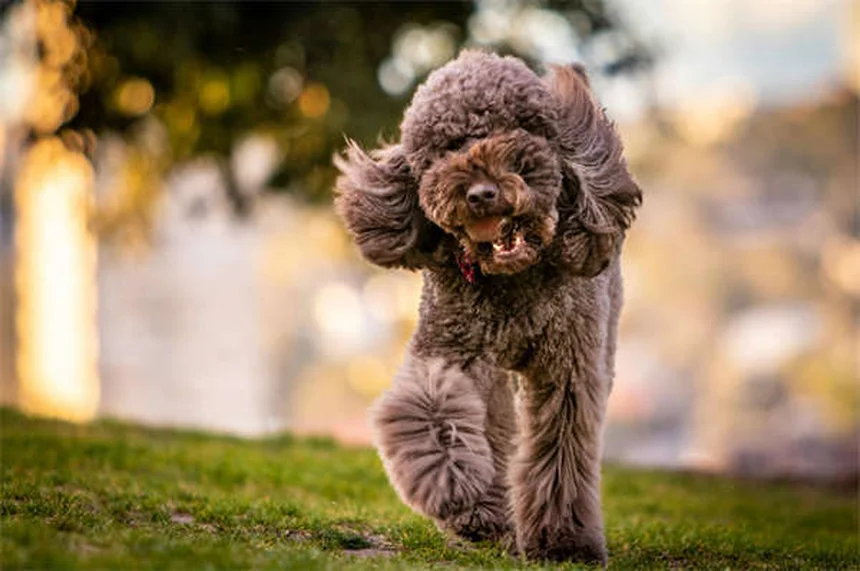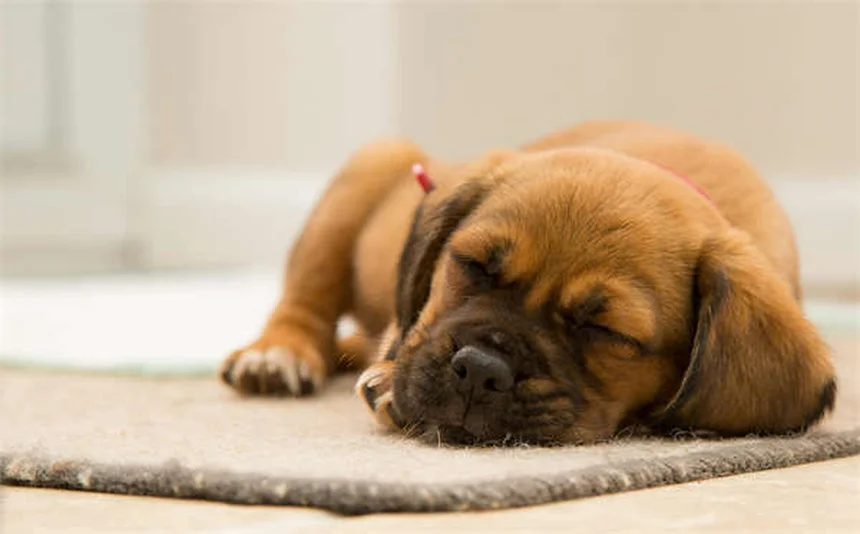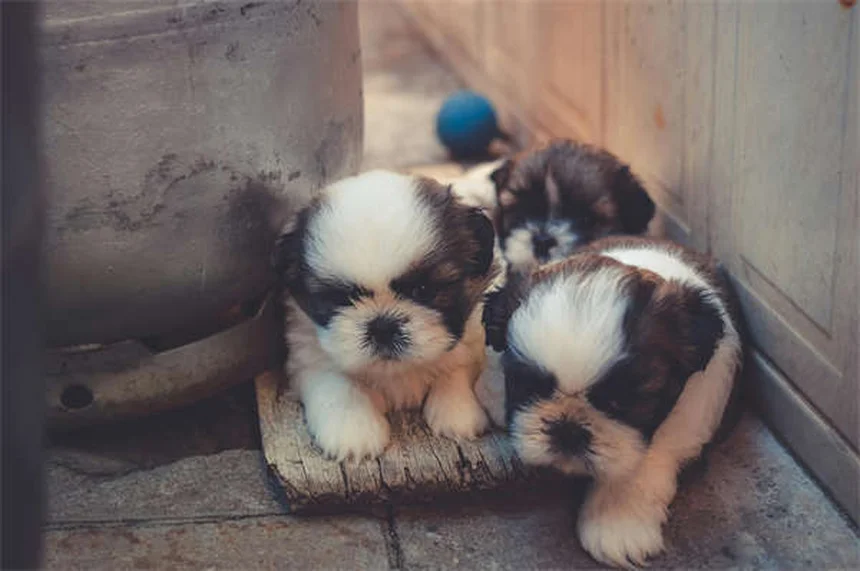Advertisement
Why does my dog have those ugly reddish-brown stains under their eyes? The answer is simple: dog tear stains are caused by porphyrin, an iron-containing pigment in your pup's tears. When tears overflow instead of draining properly, this pigment stains the fur - especially noticeable on white or light-colored dogs. I've dealt with tear stains on my Maltese for years, and let me tell you, they're more than just a cosmetic issue. Left untreated, they can lead to skin irritation and even infections. But here's the good news: with the right approach, you can both remove existing stains and prevent new ones from forming. In this guide, I'll share everything I've learned about tackling dog tear stains - from daily cleaning routines that actually work to vet-approved products that make a real difference. Whether you have a pug, shih tzu, or golden retriever, these tips will help keep your pup's face clean and healthy.
E.g. :Tyzzer's Disease in Hamsters: 5 Warning Signs You Can't Ignore
Advertisement
- 1、Why Do Dogs Get Those Ugly Tear Stains?
- 2、What's Really Causing Your Dog's Tear Stains?
- 3、Battle of the Tear Stains: How to Fight Back
- 4、Prevention Is Better Than Cure
- 5、Natural Remedies Worth Trying
- 6、Final Thoughts on Keeping Your Pup's Face Clean
- 7、The Hidden Connection Between Tear Stains and Your Dog's Health
- 8、Environmental Factors You Might Be Overlooking
- 9、Advanced Grooming Techniques for Stubborn Stains
- 10、Understanding Seasonal Variations in Tear Staining
- 11、The Emotional Impact of Tear Stains (On You!)
- 12、FAQs
Why Do Dogs Get Those Ugly Tear Stains?
The Science Behind Those Reddish-Brown Marks
You know those reddish-brown streaks under your dog's eyes? That's what we call tear stains. They're like the dog version of mascara running down your face after watching a sad movie - except dogs don't cry from emotions!
Here's what's really happening: Your dog's tears contain a pigment called porphyrin (that's a fancy word for an iron-containing molecule). When tears overflow instead of draining properly, this pigment stains the fur. It's especially noticeable on white or light-colored dogs, but dark-furred pups get them too - you just can't see them as easily.
Which Dogs Are Most Likely to Get Tear Stains?
Some dogs are practically tear stain magnets. Flat-faced breeds (we're looking at you, pugs and bulldogs) and small dogs with big eyes tend to be the worst offenders. Why? Their facial structure makes proper tear drainage difficult.
Check out this table showing the top tear stain-prone breeds:
| Breed | Tear Stain Risk Level |
|---|---|
| Shih Tzu | High |
| Maltese | High |
| Pug | Very High |
| Bulldog | Very High |
| Golden Retriever | Medium |
What's Really Causing Your Dog's Tear Stains?
 Photos provided by pixabay
Photos provided by pixabay
The Plumbing Problem: How Tears Normally Work
Imagine your dog's eyes have tiny plumbing systems. Normally, tears should drain through little tubes (called nasolacrimal ducts) into the nose. But sometimes this system gets clogged or doesn't work right - kind of like when your kitchen sink backs up!
When this happens, tears spill over onto your dog's face instead of draining properly. That's when you start seeing those ugly reddish stains forming. And just like a plumbing problem, sometimes you need professional help to fix it.
Could It Be Something More Serious?
Now, here's something important to remember: While most tear stains are just cosmetic, sometimes they can signal health issues. Did your dog suddenly develop stains when they never had them before? That's like your car's "check engine" light coming on - it's telling you something might be wrong.
Possible underlying causes include:
- Eye infections (like pink eye in humans)
- Allergies (dogs get them too!)
- Blocked tear ducts
- Eyelid abnormalities
Battle of the Tear Stains: How to Fight Back
Daily Cleaning Routine That Actually Works
Think of cleaning tear stains like brushing your teeth - consistency is key! Here's my simple daily routine that works for my Maltese:
1. Use a soft, damp washcloth (I like baby shampoo for extra gentleness)
2. Gently wipe from the inner corner outward
3. Dry thoroughly with a clean towel
4. Give a treat - because who doesn't love positive reinforcement?
Pro tip: Keep those eye hairs trimmed short. It's like giving your dog a haircut that actually prevents stains!
 Photos provided by pixabay
Photos provided by pixabay
The Plumbing Problem: How Tears Normally Work
The pet store aisle can be overwhelming with all the tear stain products. After testing dozens, here are my top picks:
- Optixcare Eye Wipes (gentle enough for daily use)
- Angels Eyes supplements (helps reduce staining from the inside)
- Plain boric acid solution (yes, the same stuff in contact lens cleaner!)
But here's a warning: Never use human makeup removers or harsh chemicals near your dog's eyes. Their eyes are way more sensitive than ours!
Prevention Is Better Than Cure
Daily Habits That Make a Difference
You know what they say - an ounce of prevention is worth a pound of cure! Here are simple daily habits that can keep tear stains at bay:
• Wipe your dog's face after they drink water (those water droplets can contribute to stains)
• Use stainless steel bowls instead of plastic (less bacteria buildup)
• Keep up with regular grooming appointments
• Consider filtered water (some say it helps reduce staining)
Did you know that some dogs develop stains from food dyes? It's true! That's why many vets recommend dye-free foods for stain-prone pups.
When to Call the Vet
Here's a question many dog owners don't ask soon enough: When should tear stains worry you? If you notice any of these red flags, it's time for a vet visit:
- Sudden appearance of stains in an adult dog
- Redness, swelling, or discharge
- Your dog is pawing at their eyes
- The stains have a foul odor
Remember, while tear stains are often just cosmetic, they can sometimes indicate more serious issues. Your vet can check for problems like infections or blocked tear ducts.
Natural Remedies Worth Trying
 Photos provided by pixabay
Photos provided by pixabay
The Plumbing Problem: How Tears Normally Work
Before you spend a fortune on specialty products, try these kitchen staples:
Coconut oil: A tiny dab can help break down stains while moisturizing the skin. Just be careful not to get it in the eyes!
Chamomile tea: Brew a weak tea, let it cool, and use it as a gentle cleanser. It's soothing for irritated skin too.
Apple cider vinegar: Diluted with water (1:1 ratio), it can help lighten stains. But test on a small area first - some dogs are sensitive.
Diet Changes That Might Help
Ever heard the saying "you are what you eat"? It applies to dogs too! Some simple diet tweaks can reduce tear staining:
- Switch to high-quality, natural food
- Add probiotics (good gut health = less staining for some dogs)
- Ensure your dog isn't allergic to their food
- Consider adding blueberries (natural antioxidants may help)
Here's a funny thought: If your dog could talk, they'd probably say "More steak, less stains!" But seriously, diet makes a bigger difference than most people realize.
Final Thoughts on Keeping Your Pup's Face Clean
Patience and Consistency Are Key
Here's the hard truth: There's no overnight miracle cure for tear stains. It takes regular care and patience. But seeing your dog's bright, clean face makes it all worth it!
Think of it like training for a marathon - you wouldn't expect to run 26 miles on day one. Similarly, clearing tear stains takes time and consistent effort.
Every Dog Is Different
What works for your neighbor's pug might not work for your shih tzu. That's why I recommend trying different approaches until you find what works for your pup.
And remember - while we might obsess over those stains, your dog doesn't care one bit! As long as they're healthy and happy, a few stains won't bother them. Though I'll admit, a clean face does make for better Instagram photos!
The Hidden Connection Between Tear Stains and Your Dog's Health
How Tear Stains Can Reveal Underlying Health Issues
You might think tear stains are just a cosmetic issue, but they can actually be your dog's way of waving a red flag. Did you know that chronic tear staining could indicate your pup's body is struggling with something more serious? It's like when your car's dashboard lights up - you wouldn't just put tape over the warning light!
Some veterinarians report that dogs with persistent tear stains often have digestive issues or food sensitivities. The porphyrin in tears comes from the breakdown of red blood cells, and when the body isn't processing nutrients efficiently, more of this pigment ends up in tears. That's why switching to a higher quality diet sometimes clears up stains dramatically.
The Surprising Link Between Gut Health and Tear Stains
Here's something fascinating - your dog's gut microbiome might be playing a role in those tear stains. Recent studies suggest that dogs with balanced gut bacteria tend to have fewer staining issues. It makes sense when you think about it - if the digestive system isn't working optimally, more waste products might be excreted through tears instead of normal channels.
Consider adding a probiotic to your dog's routine. Many pet owners report noticeable improvement in tear staining within weeks. My neighbor's bichon frise went from having constant stains to nearly clear fur just by adding a daily probiotic to his meals. Of course, results vary, but it's worth a try!
Environmental Factors You Might Be Overlooking
How Your Home Air Quality Affects Tear Stains
Let's talk about something most people never consider - the air your dog breathes. Dust, pollen, and other airborne irritants can cause increased tear production, leading to more staining. If you live in a dry climate or use air conditioning frequently, the lack of humidity might be drying out your dog's eyes, causing them to overcompensate with more tears.
Here's a simple test: Try running a humidifier in the room where your dog spends most time. Many pet owners notice their dogs' eyes seem less irritated and produce fewer tears within days. It's an easy, inexpensive solution that might make a big difference!
The Water Quality Connection
What's in your dog's water bowl might be contributing to those stains. High mineral content in tap water (especially iron) can increase staining. Some areas have water with so much iron it actually turns white fur orange over time!
Consider this comparison of water types and their potential effects:
| Water Type | Potential Effect on Tear Stains |
|---|---|
| Tap Water | High mineral content may worsen stains |
| Filtered Water | Reduced minerals may help minimize staining |
| Distilled Water | No minerals but lacks beneficial nutrients |
| Spring Water | Natural balance of minerals, often ideal |
Advanced Grooming Techniques for Stubborn Stains
Professional Grooming Secrets You Can Use at Home
Professional groomers have some clever tricks up their sleeves for dealing with tear stains. One technique involves using a small amount of cornstarch to help absorb moisture and lighten stains between cleanings. Just dust a tiny amount on the stained area and gently brush it through - it's like dry shampoo for your dog's face!
Another pro tip is to use a fine-toothed comb specifically for the facial hair. Gently combing through stained areas helps remove buildup and allows air to circulate better. Think of it like brushing your hair - regular maintenance prevents tangles and keeps everything looking fresh.
The Right Way to Trim Facial Hair
Many owners make the mistake of shaving or cutting too close around the eyes. This can actually make tear stains worse by allowing tears to run directly onto the skin instead of being wicked away by hair. The key is to trim just enough to keep hair out of the eyes while maintaining some length to absorb tears.
Invest in a good pair of rounded-tip scissors specifically designed for pet grooming. Trim in the direction of hair growth, and always err on the side of caution - you can always trim more later if needed. Remember, your dog's facial hair serves an important purpose in protecting their eyes!
Understanding Seasonal Variations in Tear Staining
Why Stains Might Get Worse in Certain Seasons
Have you noticed your dog's tear stains changing with the seasons? Many dogs experience increased staining during allergy seasons or in extreme weather conditions. In spring, pollen can irritate eyes, while winter's dry air might cause excessive tearing. It's nature's way of keeping eyes lubricated, but it can lead to more noticeable stains.
During summer, increased outdoor activity means more dust and debris can get into your dog's eyes. And let's not forget about swimming - pool chemicals or lake water can really irritate sensitive eyes. Always rinse your dog's face with clean water after swimming adventures!
Adjusting Your Routine Throughout the Year
Just like you change your skincare routine with the seasons, your dog's eye care needs adjustments too. In dry winter months, consider more frequent gentle cleanings to prevent buildup. During allergy season, wiping your dog's face after outdoor play can remove irritants before they cause problems.
Here's a seasonal checklist to keep in mind:
- Spring: Watch for increased pollen-related tearing
- Summer: Protect from sun and rinse after swimming
- Fall: Be mindful of falling leaves and debris
- Winter: Combat dry air with humidifiers
The Emotional Impact of Tear Stains (On You!)
Why We Stress Over Our Dogs' Appearance
Let's be honest - we want our dogs to look as good as they make us feel! There's nothing wrong with wanting your pup to have a clean, bright face. But sometimes we need to remember that dogs don't care about stains - they care about love, treats, and belly rubs.
I've seen owners get genuinely upset over tear stains, spending hundreds on products and stressing over every little mark. Here's the thing: your dog picks up on your energy. If you're constantly fussing over their face, they might start to associate grooming with stress. Keep cleaning sessions positive and relaxed!
Finding Balance Between Care and Obsession
It's easy to fall down the rabbit hole of tear stain solutions, especially with all the "miracle cure" claims online. But ask yourself this: Are the stains actually bothering your dog, or just you? If your vet has ruled out health issues, sometimes the healthiest approach is to accept some natural staining.
That said, there's nothing wrong with wanting to minimize stains - just keep perspective. Your dog's happiness and comfort should always come first. And remember, those Instagram-perfect dogs you see online? They probably had their faces cleaned five minutes before the photo!
E.g. :A Veterinary Guide to Stubborn Tear Stains on Dogs
FAQs
Q: Are dog tear stains harmful to my pet?
A: While dog tear stains are mostly a cosmetic concern, they can sometimes indicate underlying health issues. The stains themselves aren't dangerous, but the constant moisture can lead to skin irritation or bacterial infections if left untreated. I always tell pet owners to watch for signs like redness, swelling, or foul odor - these mean it's time to visit the vet. For most dogs though, regular cleaning and proper grooming can keep tear stains under control without any health risks.
Q: What's the fastest way to remove tear stains from my dog?
A: From my experience, the quickest method combines daily cleaning with the right products. Start by gently wiping the stained area with Optixcare Eye Wipes or a damp cloth with baby shampoo. For stubborn stains, try a boric acid solution (the same kind used in contact lens cleaner). Remember to always wipe outward from the eye and dry thoroughly afterward. It might take a few weeks of consistent care, but you'll see noticeable improvement if you stick with it daily.
Q: Can certain dog foods cause tear stains?
A: Absolutely! Many pet owners don't realize that diet plays a big role in dog tear stains. Food dyes, low-quality ingredients, and even food allergies can increase tear production and staining. I recommend switching to a high-quality, natural diet and considering dye-free options. Some dogs benefit from probiotics or adding antioxidant-rich foods like blueberries. It's amazing how much difference a simple diet change can make for some pups!
Q: Why do some dog breeds get more tear stains than others?
A: Breeds with flat faces (like pugs and bulldogs) or large eyes (like shih tzus) are more prone to dog tear stains because of their facial structure. Their shallow eye sockets and compressed tear ducts make proper drainage difficult. Small white dogs show stains more obviously, but dark-furred breeds get them too - you just can't see them as easily. If you have one of these breeds, regular face cleaning should be part of your grooming routine.
Q: When should I be concerned about my dog's tear stains?
A: You should consult your vet if the stains appear suddenly in an adult dog, if you notice excessive tearing, or if there's any redness, swelling, or discharge. These could signal infections, allergies, or blocked tear ducts needing medical attention. As a general rule, if your dog seems uncomfortable or is pawing at their eyes, don't wait - make that vet appointment. Otherwise, consistent home care should keep most tear stains under control.

